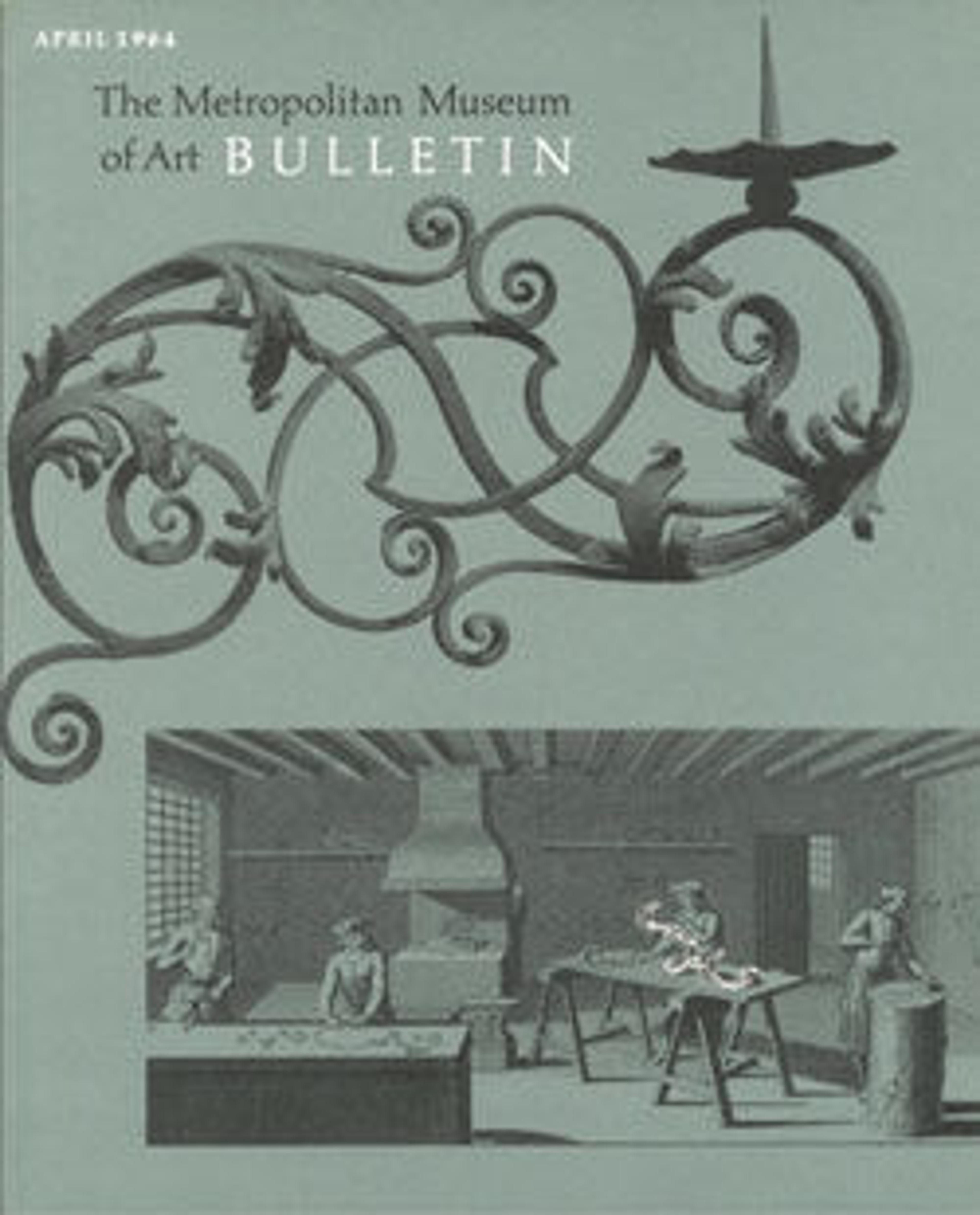Door knocker
This iron door knocker in the shape of a dragon was probably made in Siena, for it is most closely related to such a prized accessory of the Sienese palazzo as the griffin-shaped banner holder on the Palazzo Grisoli. The dragon is in all likelihood not much later than the first quarter of the sixteenth century, since in knockers made later in that century the spontaneity of the earlier Sienese work seems to have been lost. Both dragon and griffin were constructed from an iron bar, rapidly bent into shape while hot from the forge. Separate pieces for wings and feet were then heated, drawn out, and attached to the bar with iron rivets. Finally, hammer and punch were used to supply the identifying features of the animals and to create a satisfying surface decoration, as, for example, the pattern of hammer blows on the dragon’s body that suggests its scales. These vivacious creatures demonstrate the strength and liveliness of form of the best work of the Tuscan Renaissance blacksmiths.
Artwork Details
- Title:Door knocker
- Date:late 15th–early 16th century
- Culture:Italian, probably Siena
- Medium:Iron
- Dimensions:Overall: 14 1/4 × 5 7/8 in. (36.2 × 14.9 cm)
- Classification:Metalwork-Iron
- Credit Line:Harris Brisbane Dick Fund, 1957
- Object Number:57.137.27a, b
- Curatorial Department: European Sculpture and Decorative Arts
More Artwork
Research Resources
The Met provides unparalleled resources for research and welcomes an international community of students and scholars. The Met's Open Access API is where creators and researchers can connect to the The Met collection. Open Access data and public domain images are available for unrestricted commercial and noncommercial use without permission or fee.
To request images under copyright and other restrictions, please use this Image Request form.
Feedback
We continue to research and examine historical and cultural context for objects in The Met collection. If you have comments or questions about this object record, please contact us using the form below. The Museum looks forward to receiving your comments.
